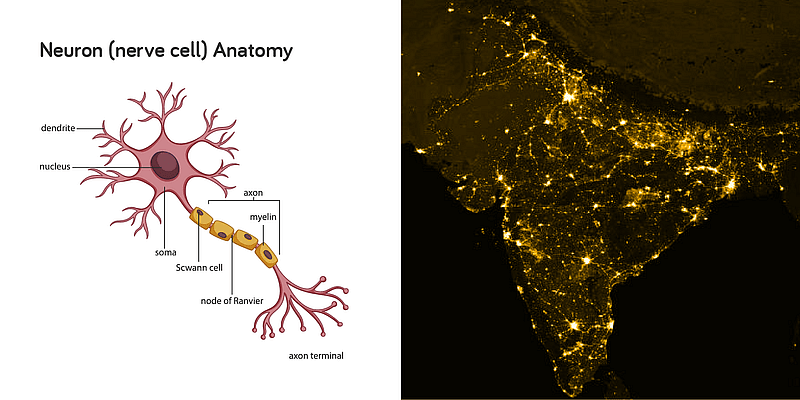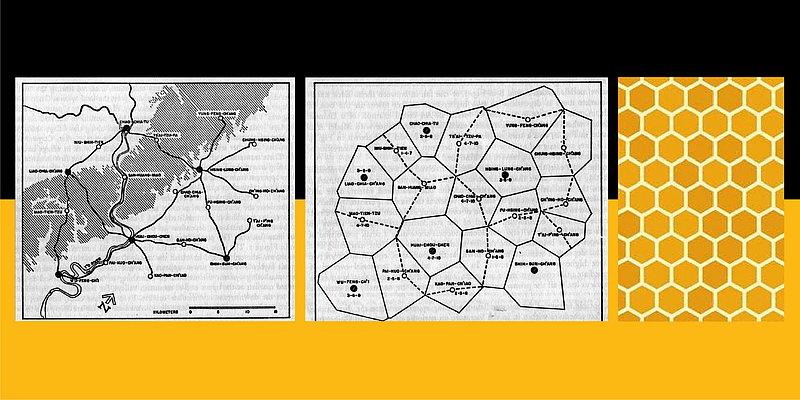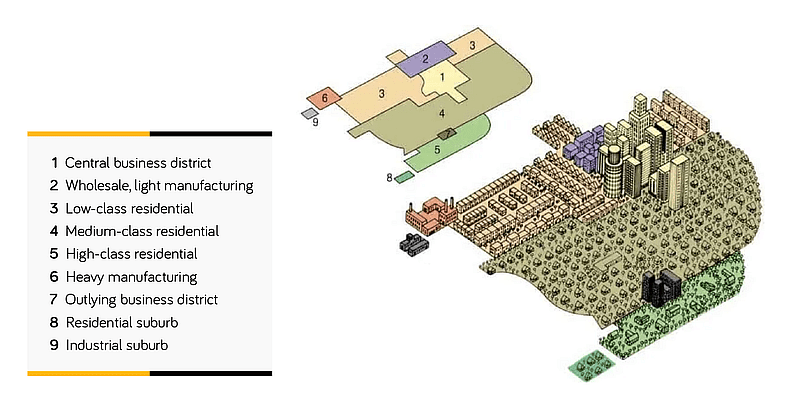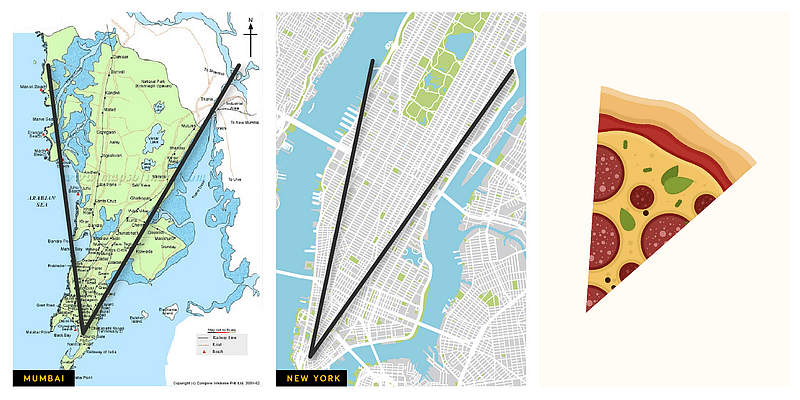In a utopian world, the entire human population would be spread equally over the entire habitable landmass of the earth. Of the 57,308,738 square miles of land surface area that earth occupies, about 24 percent is mountainous and 33 percent is desert. If you subtract the uninhabitable 57 percent from the total land area, that leaves 24,642,757 square miles of habitable land. Hence, every human being is entitled to 2 acres of arable, habitable land. But that is far from reality.
While there are pockets in New York or Mumbai where population density is very high and commensurately expensive, it is difficult to see human habitation for hundreds of miles in many other places. Ever wondered why?
Geospatial designs for population density
Since time immemorial, human civilisation has replicated biological models. For example, if you correlate the growth of villages, towns and cities, they very closely resemble the Neural Networks of living organisms. The cell body can be considered a population centre, and the dendrites a connectivity/transport means (roads & rivers). There are also natural obstacles to be factored in like mountains, seas, deserts etc which force the dendrites to circumambulate them. These are similar to population densities which can be gauged from a night light map.

G William Skinner conducted a geospatial study that provides a regional systems analysis of spatial patterns in China. A social-economic region is a system of flows of people, goods, and ideas. Intercity connections like roads and waterways play a crucial role in knitting together the economic activities of a region in the circumstances of pre-modern transport.
Back then, China wasn’t a single national economic system, nor was it a set of separate provincial economies. It consisted of a small number of “macroregions” of trade, commerce, and population activity, intertwined by transport.
The patterns in their natural state broadly resemble a honeycomb which is the most efficient geospatial design to reduce distances.

As urban development takes place, cities expand and undergo various changes. The structure of the city and land-use patterns have distinct characteristics. Based on these patterns of urban land use, urban models are created which helps in understanding the reason for a particular activity or land use being observed at a particular location or region. Most cities have a dense centre, which is a central area with high land value, economic activity, vertical development, etc. Such characteristics form a part of urban studies and urban land use patterns.
The Bid Rent Theory: Fluctuations in price and demand
The Bid Rent theory by David Ricardo states that the price and demand for real estate change as the distance from the central business district (CBD) increases.
It was first developed in an agricultural context, where the rent on the most productive land is based on its advantage over the least productive. The competition among farmers ensured that the full advantages go to the landlords in the form of rent. This theory was later modified by J H von Thünen, who combined it with the notion of transport costs. His model implies that the rent at any location is equal to the value of its product, excluding production costs and transport costs. If you consider that transportation costs are constant for all activities, it will lead to a situation where activities with the highest production costs are located near the marketplace, while those with low production costs are farther away.
This theory is based upon the reasoning that the more accessible an area (i.e., the greater the concentration of customers), the more profitable it is.
This implies that the poorest houses and buildings would be on the outskirts of the city, as this is the only location that they can afford to occupy. However, this is rarely the case in modern times, as people prefer to trade off the accessibility of being close to the CBD and move to the edges of a settlement, where you can buy more land for the same amount of money. Likewise, lower-income housing would choose increased accessibility to employment over a greater living space. This is apparently visible in North American cities.
So, when different land users compete with one another for land close to the city centre, the amount they’re willing to pay is called "bid rent".
The urban model of CBD
The concentric land-use structure closely resembles the urban model of CBD, which states that commerce (in particular large department stores and chain stores) is willing to pay the greatest rent in order to be located in the inner core. For departmental stores that require a considerable turnover, this is a great location as it’s easily accessible to the larger population of the city. So, they’re willing to pay a very high land rent value and maximise the potential of their site by building multiple storeys.

Source: https://planningtank.com/settlement-geography/multiple-nuclei-model
Industries, on the other hand, will pay to be in the outer core as there is more land available for factories, as it has many of the benefits as that of the inner core, such as a marketplace and good transportation linkages.
As one goes farther out, the land becomes less attractive to industries due to the reducing transportation linkages and a decreasing marketplace. Because homeowners do not rely heavily on these factors and can afford the reduced costs (compared to those in the inner and outer core), they’re able to purchase land in these areas. This is why inner-city areas are very densely populated (with terraces, flats, and high rises), while suburbs and rural areas are more sparsely populated (with semi-detached and detached houses).
How pizza slice-shaped cities fare
Cities also often face natural obstacles that shape their growth like mountains ridges, lakes, seas, etc, which has a major impact on real estate prices and price gradients. A city like Mumbai or New York is like a single pizza slice and it’s at a 30-degree angle from the historical city centre i.e. Nariman Point for Mumbai and Battery Park for New York.

If you consider the habitable areas from the foci CBD i.e. Nariman Point or Battery Park, it is π r² multiplied by 30°/360°. Had the sea not surrounded the CBD, the available habitable area would be 12 times more (area of a full circle). Another factor to consider is ‘r’ which is the distance from CBD. This exponentially increases in pizza slice-shaped cities.
A popular way to rationalise prices is by literally building bridges to nearby landmasses like the Brooklyn Bridge or the Vashi bridge or the proposed Sewri Nava Sheva Bridge in Mumbai. Also creating alternative peripheral business districts (PBD) like New Jersey or Bandra Kurla.
Link : https://yourstory.com/2021/09/bhive-predict-real-estate-prices-pizza-slice
Author :- Sandeep Gupta ( )
September 07, 2021 at 01:30PM
YourStory
